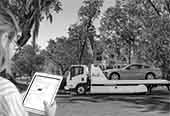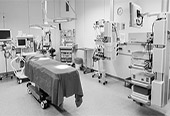Southwest Airlines
Redesigning and prototyping the in airport experience for Southwest Airlines
Role
UX/UI, Qualitative Research
Updates
After going two months of stress tests, with over 300,000 passengers, SWA has started rolling out the updated designs in select airports.
Most in-airport experiences in the US are series of mediocre moments held together by the anxiety and adrenaline of missing your flight. From the minute you pass through security to moment you board the plane you your ability to navigate an extremely chaotic environment, grab a snack, run to the bathroom, find your gate are managed through a series of often conflicting or out of date touch-points.
This was the second phase of ongoing work with Southwest Airlines focused on taking a series of design concepts aimed at improving the airport experience for both Travelers and Employees, scaling, and prototyping them with real data, in a real airport, with real people for two weeks, ahead of one of the busiest times to travel in the US—Thanksgiving.
User Needs
Based on multiple rounds of research, we identified three key user needs within the airport experience, with which this project was built around. Both the Customers and the Employees share these needs, but given obvious difference between the two, they manifest in different ways.
01 / Communication
The sheer number of things someone needs to keep in their memory when traveling through an airport can be overwhelming—from the departure time, boarding time, boarding group, did I remember my ID, my gate changed to D19, not to mention the added stress of security, the crowds of people and noise. To say it’s a distracting environment would be an understatement. Travelers and Employees are usually looking for the same amount of information but it can be hard to find the right info through the chaos.
02 / Trust
There’s constantly conflicting information in the airport, whether it’s a different departure time than what’s on your boarding pass, to a last min gate change. Travelers have learned not to trust the information in airports, even Employees are left in the dark, and are often the last to know if something changes.
03 / Peace of Mind
Even in the best case scenario, getting to your gate or getting a flight out on time, can be a stressful tight rope walk to the finish. If something goes wrong on either side, an already high pressure environment can escalate quickly. With the stakes so high Travelers often hang by the gate just in case something changes last min instead of using their time to use their time more effectively. And similarly for Employees, sometimes they need to focus on operations over Customers.


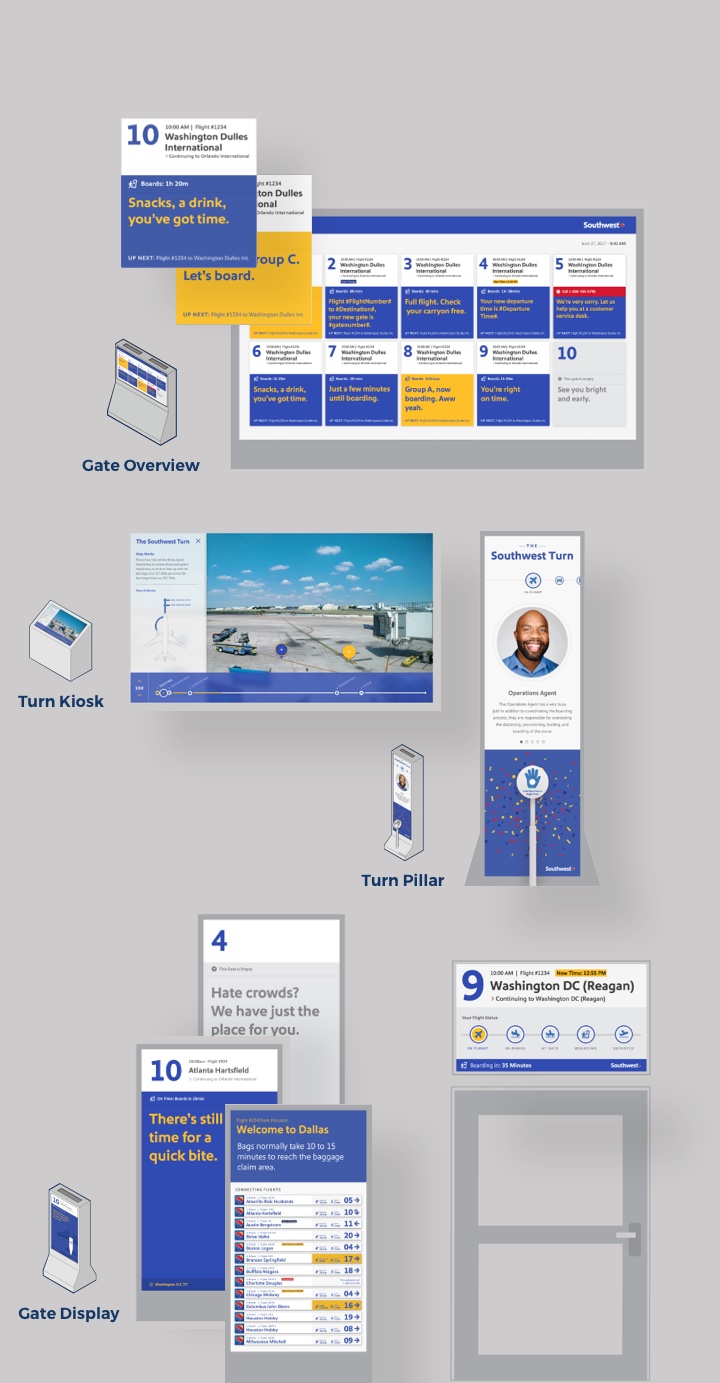

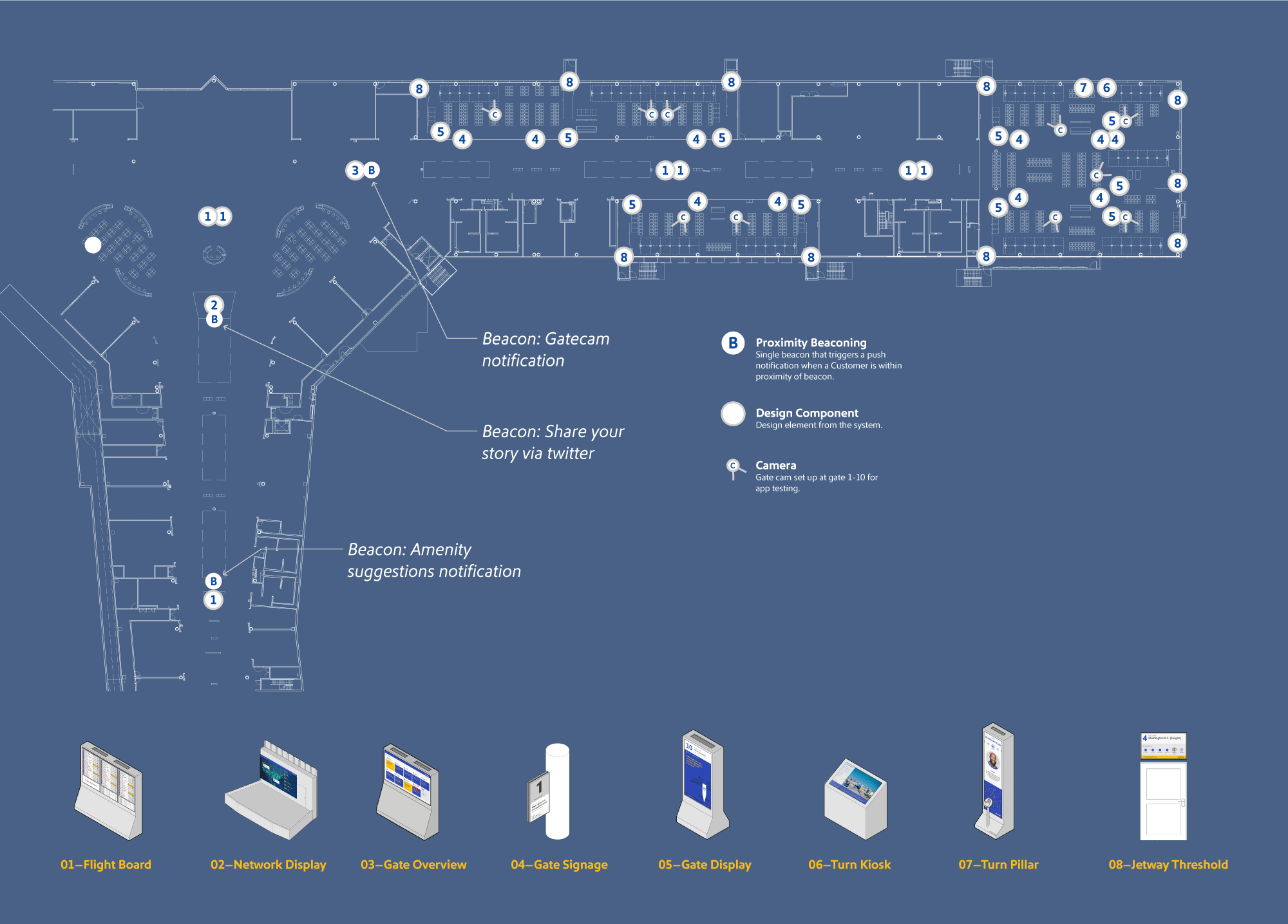

Ecosystems of Ecosystems
Designing for scale, ambiguity, and redundancy
From the moment you pass through security to when you board your plane, we designed eight different digital touch-points within the airport and a companion mobile app. The goal of all of these systems is to help manage expectations at various stages throughout the airport experience ranging from casual moments letting you know that a gate area is open for you to spread out and practice best Warrior pose, to the high urgency moments when you need to know exactly which direction and how long it will take you to get to your gate because your group is boarding now. We even added ways for passengers to learn more about what goes into turning a plane around from touch down to take off.
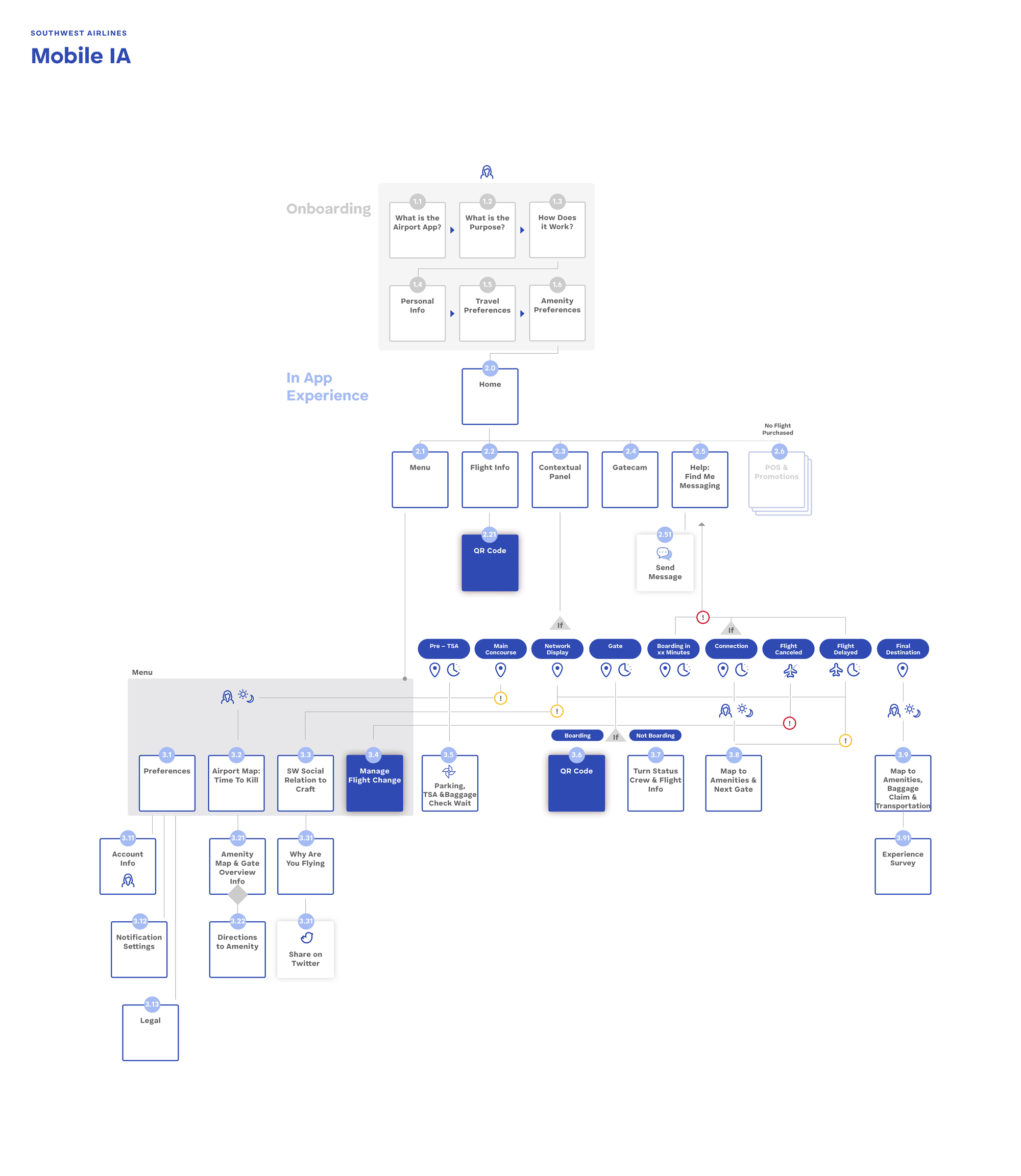

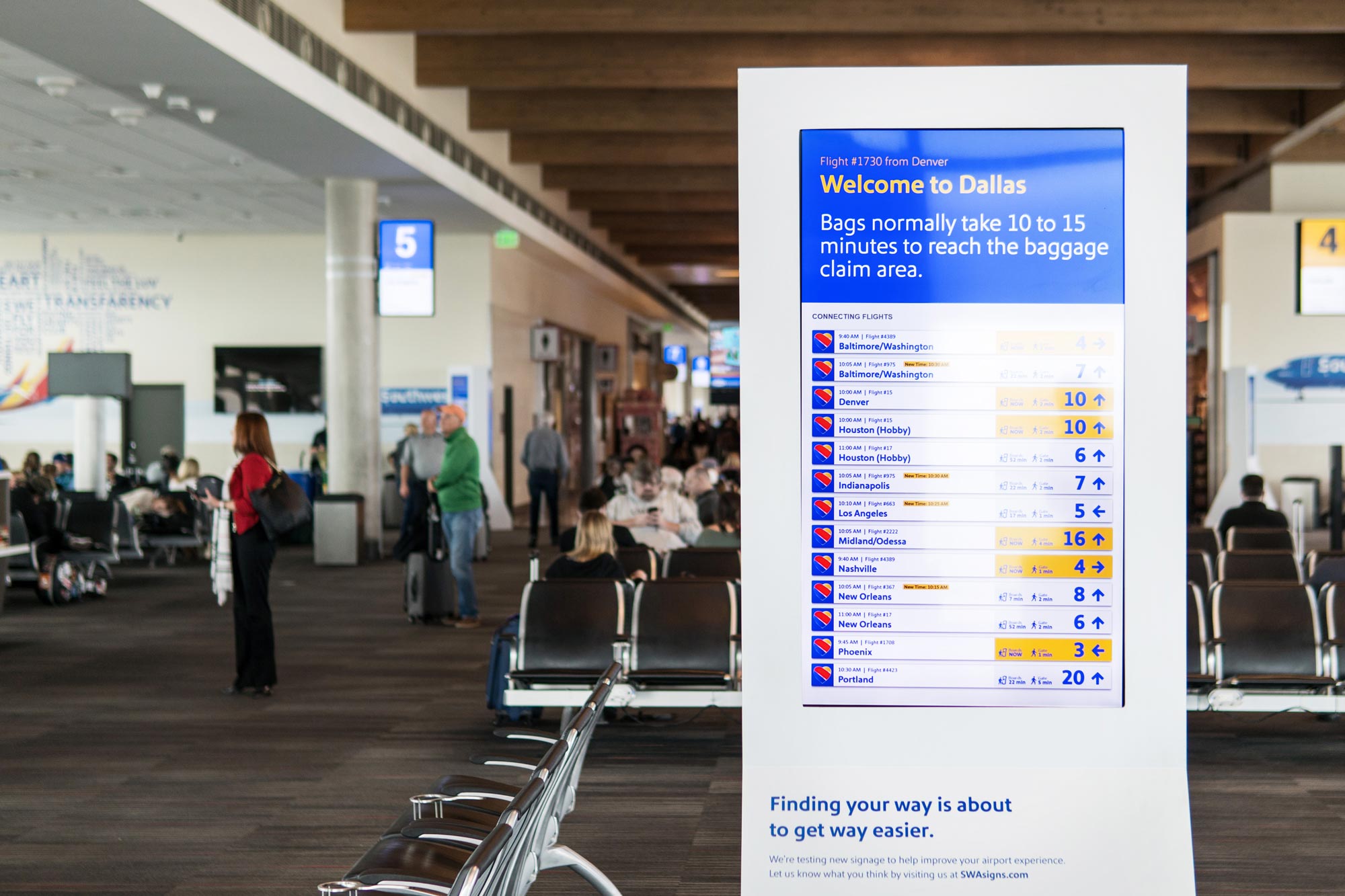

Measuring Success
Admittedly, airports have set the bar of very low when it comes to pretty much everything, so we knew we would be making an improvement, but how much? To find out we did three things. First we reached out to travelers at various segments from first time Southwest fliers to seasoned pros. Then we met them right as they were putting their shoes on, after security and walked them to their gate, stopping at each designed touch point throughout the concourse on our way asking them questions about the experience. This gave us a robust qualitative look at what Travelers thought of navigating through the airport to their gate. Next, we stood near each touchpoint and intercepted Travelers asking them a series of questions trying to understand how helpful way finding was in terms of finding the right information. And finally, we had an open survey for each touchpoint allowing anyone to critique the experience while they waiting.
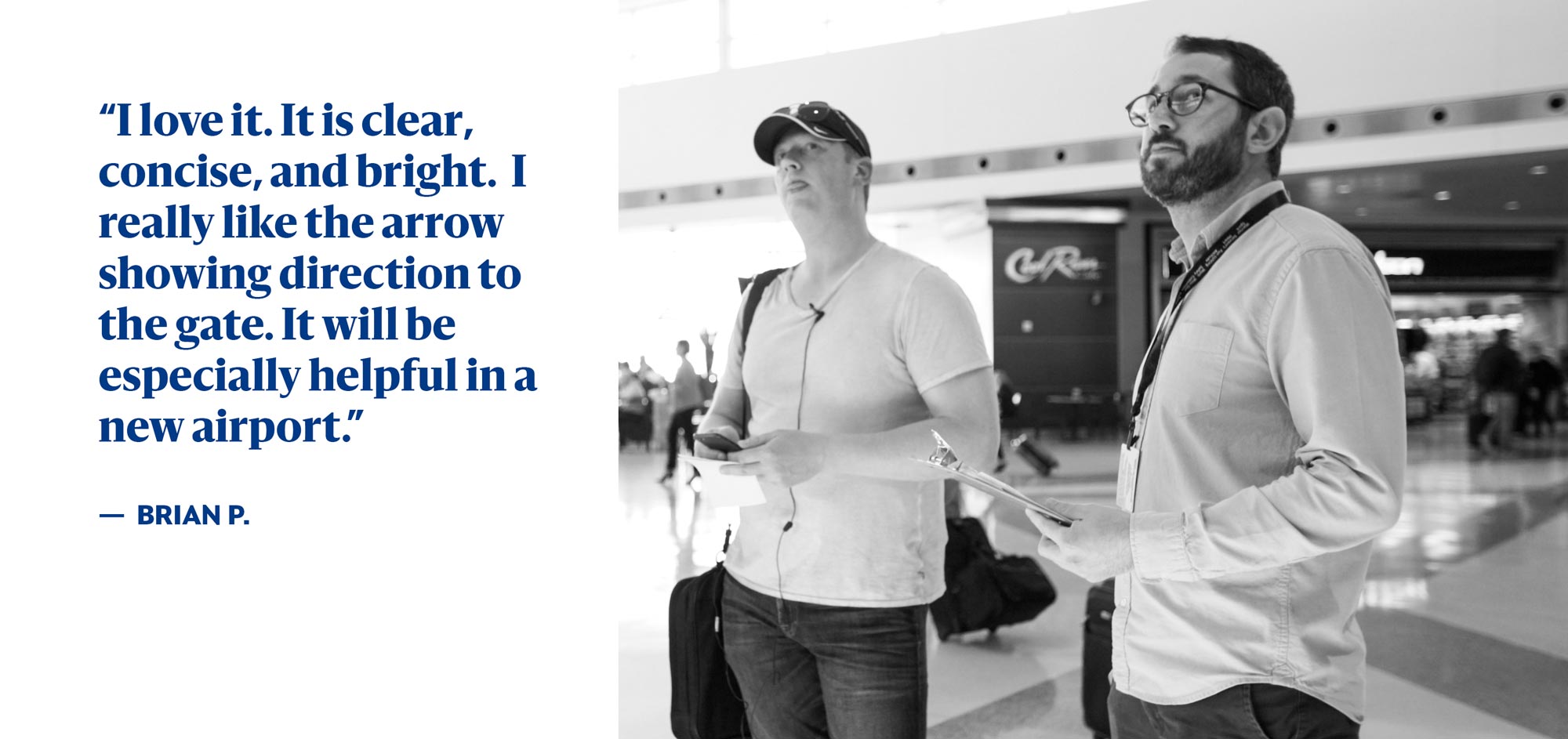

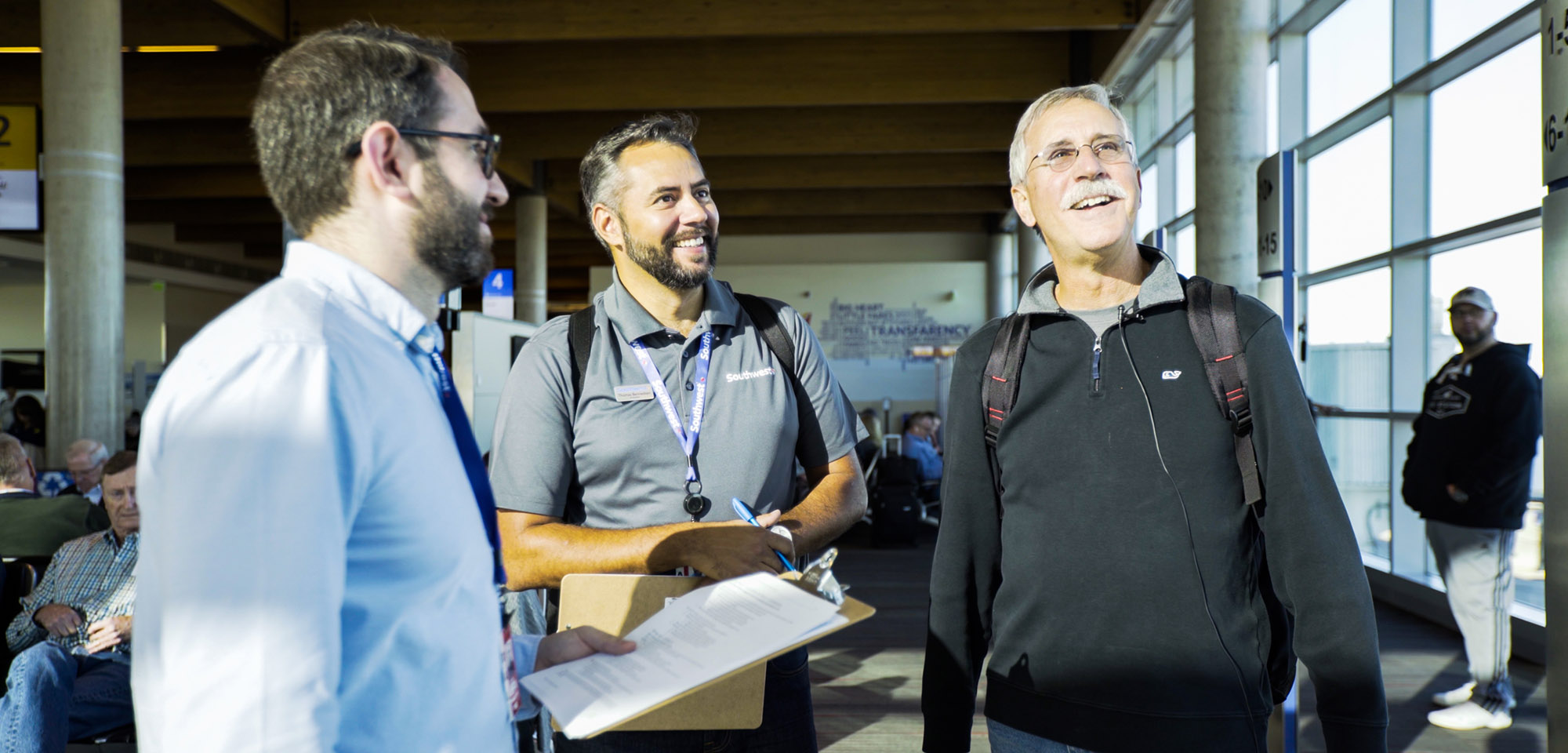

Project Record
No matter how public a project is, having a video telling the story through the key stakeholders is a great way to encapsulate a project and help socialize the impact long after the prototype has been taken down
